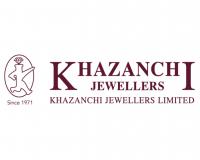Global Gold Market Surges to $23 Trillion Amid Central Bank Buying Spree, India Holds 15% Share

New Delhi, July 7 – A recent report has revealed that the global foreign exchange reserves stand at approximately $12.5 trillion, while the gold market has expanded significantly to an estimated $23 trillion. India holds a notable 15 percent share of this gold market, underlining its traditional affinity and investment in the precious metal.
According to the July 2025 edition of the Netra Report released by DSP Mutual Fund, around 65 percent of all gold ever mined is currently held in the form of jewelry. The report suggests that if even 5 percent of global reserves were to shift into gold, it could lead to a sustained and significant surge in gold prices.
Central banks around the world have been increasing their gold reserves, with a notable uptick in the past four years compared to the previous two decades. Between 2000 and 2016, central banks collectively purchased gold worth $85 billion. In stark contrast, in the single year of 2024 alone, they bought gold worth $84 billion, as per agency report.
Since 2022, central banks have been purchasing nearly 1,000 metric tonnes of gold annually, accounting for over a quarter of the world’s total annual gold mining output. This trend reflects a growing inclination among nations to hold non-dollar reserve assets. The instability of U.S. Treasury bonds has made gold a more appealing option for central banks seeking to safeguard their wealth.
The report also highlights that demand for gold remains strong at present. India’s central bank, the Reserve Bank of India (RBI), currently holds about 880 metric tonnes of gold. Notably, in the current financial year (FY2026), India has not added to its reserves, possibly waiting for price corrections following an over 80 percent rise in the last five years amidst global geopolitical and trade uncertainties.
The report further points out the economic vulnerabilities within the European Monetary Union (EMU), which have repeatedly weakened the euro. Meanwhile, the Chinese yuan is still not widely accepted as a market-driven or politically neutral reserve currency.
Additionally, the report notes that India has witnessed a consistent rise in operating cash flow (OCF) margins, signaling strength in cash generation. This is considered a positive indicator from both capital allocation and corporate governance perspectives.






